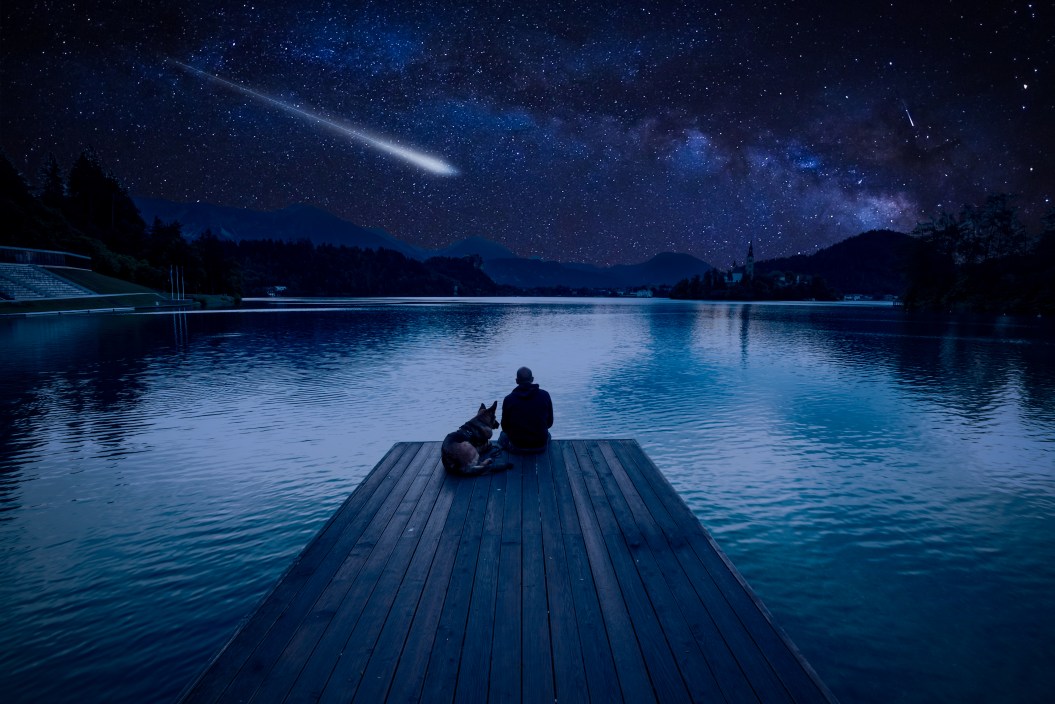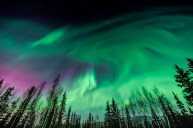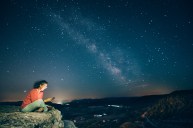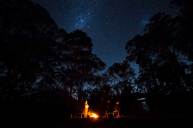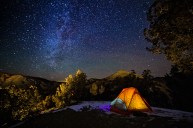It's always a treat to look up into a dark night sky and catch a glimpse of a shooting star. But why settle for just one? A meteor shower is a fantastic time to see shooting stars—sometimes dozens or more per hour—streaking across the sky.
The coolest part: Astronomers can predict when these astral events will occur, so you can plan for your stargazing to be in an optimal viewing location like a Dark Sky Park, at the right place, right time.
What Is a Meteor Shower?
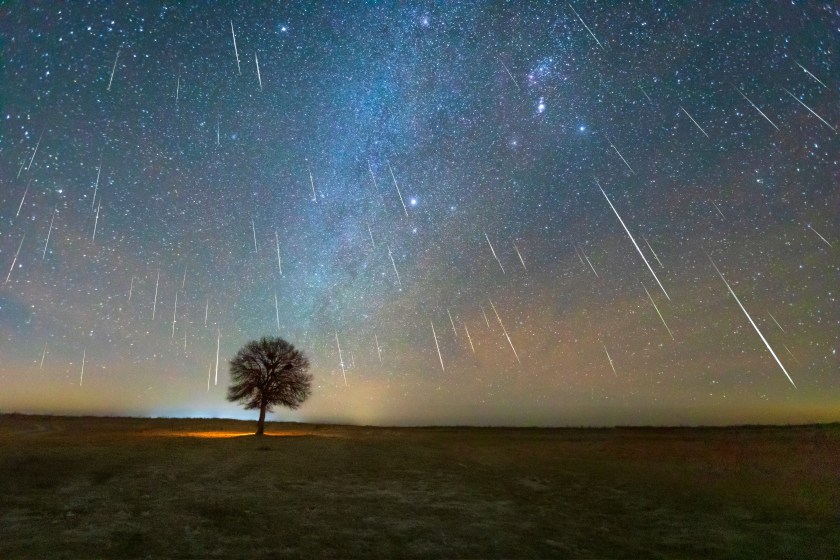
Geminids Meteor Shower | Getty Images, bjdlzx
When a meteoroid—a sort of space rock or speck of space dust—enters the planet's atmosphere and burns, the bright light it creates is seen as a meteor from Earth. They usually burn up entirely, but sometimes one of these rocks will enter the Earth's atmosphere and reach the surface, becoming renamed "meteorites" in the process.
Meteor showers occur in the solar system when comets leave a trail of debris through which the earth rotates. Because our planet revolves on a regular yearly cycle, the Earth often passes through these trails at the same times of the year. Meteor showers are generally named after the area in space where they appear to come from in the sky, such as a constellation or nearby star, according to NASA.
Major Meteor Showers in 2023
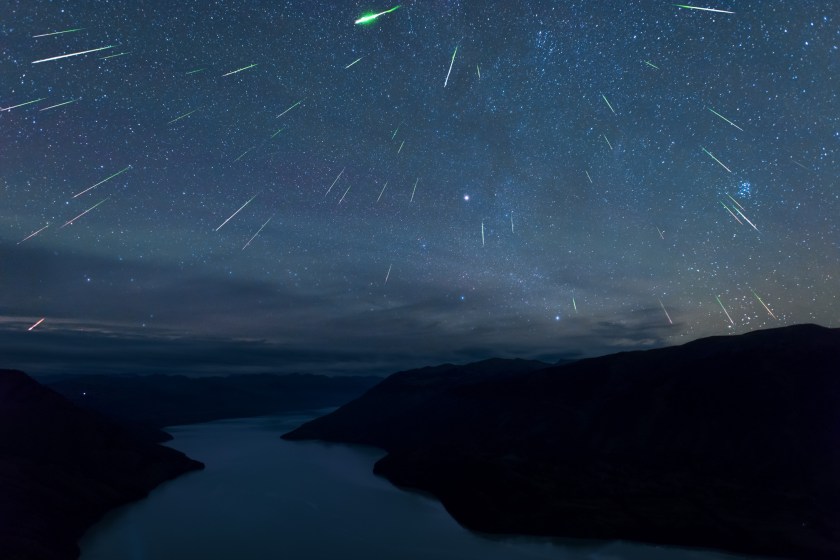
Perseids Meteor Shower | Getty Images, Zhuoxiao Wang
But simply knowing when these showers will happen isn't enough to determine the best night(s) for optimal viewing. Nights with as little moonlight as possible typically provide the best show, so you want to aim for a peak night that's as many days away from the full moon as possible or time your viewing before moonrise.
Apps can also provide full meteor shower calendars, and Star Walk is a great one for detailed information, including the meteor shower peaks to get the best view, what direction in the sky to look, and how the moon may affect viewing.
Below, are the most impressive meteor showers in 2023.
Perseid Meteor Shower
When: August 12-13 peak
Best Viewing: Any clear, dark sky in the northern hemisphere
The Perseid Meteor Shower, named for its proximity to the constellation Perseus, is often considered the best meteor shower of the year, with the debris left from the comet Swift-Tuttle (a.k.a. comet 109p) streaking through Earth's orbit each August. Warm summer nights bring meteor gazers out in force to appreciate this meteor shower, which lasts from mid-July to mid-August and should peak on the night of August 12 this year. Under ideal conditions with no moon, you may be able to spot up to 90 meteors per hour—or even more. They can be colorful streaks that leave trails behind them in the sky or even brilliant fireballs.
This year offers "perfect conditions to observe the Perseids," according to Star Walk, so be sure to take a look, especially as the predicted peak is just a few days before the New Moon, providing a very dark sky. The Northern Hemisphere is the place to watch this meteor shower, though viewing may be more difficult above latitudes around 60 degrees north.
Draconids Meteor Shower
When: October 8-9 peak
Best Viewing: Any clear, dark sky in the northern hemisphere
While the Draconids are known for typically being a quieter meteor shower relative to Perseid, with 10 or so meteors per hour, occasionally they will produce a spectacular show with hundreds of meteors per hour. While this is rare, it's always worth taking a peek in the sky to see what you can spot. (An hourly rate of up to 10 meteors isn't too shabby, regardless.) This meteor shower occurs in early October, peaking around October 8 to 9.
Orionids Meteor Shower
When: October 21-22 peak
Best Viewing: Any clear, dark sky in the northern hemisphere
Keep an eye on the sky this fall for the Orionids. The meteor shower, which NASA describes as the "most beautiful," is expected to peak from October 21 to 22, though the full event lasts from late September through mid-November. Under ideal conditions with no moonlight, you can often see 10 to 20 meteors each hour, with especially bright fireballs occasionally visible.
Leonid Meteor Shower
When: November 17-18 peak
Best Viewing: Any clear, dark sky in the northern hemisphere
In 1966, during the Leonid Meteor Shower, skywatchers enjoyed 15 minutes when thousands of meteors shot through the air every minute in a "meteor storm." While that was an anomaly, the Leonid shower—named for the nearby constellation Leo—usually provides 10 to 15 meteors an hour, making it a worthy watch. This shower that originates from the comet Tempel-Tuttle should last through most of November into very early December, with November 17 to 18 as the peak.
Geminids Meteor Shower
When: December 13-14 peak
Best Viewing: Any clear, dark sky in the northern hemisphere
Bright white meteors streak across the sky during the Geminids meteor shower each year. This year, the shower near constellation Gemini should last from mid-November to mid-December, with a peak around December 13 to 14. This spectacle, with its impressive number of meteors, is sometimes compared to the Perseids as one of the top ones to watch each year.
Where to Watch Meteor Showers
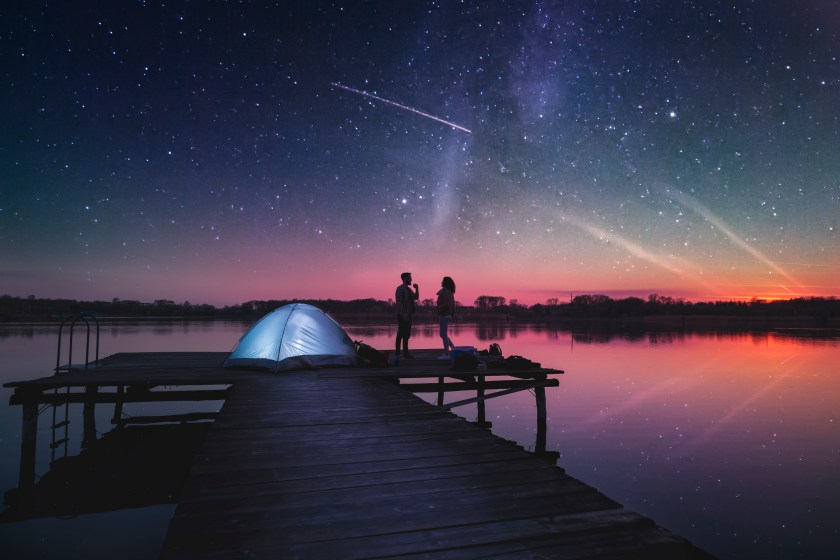
Getty Images, vladans
For the chance to see the most meteors, head to the darkest place you can find that's free of the light pollution of city lights and during a dimmer moon phase.
Camping chairs offer a great way to watch, while some prefer to lay down a picnic-style blanket and lie down to gaze up. You can look from your backyard, campsite, or even in a public gathering like a star party to share the experience with others. Be sure to remain aware of your surroundings and any safety hazards in your area, such as wildlife.
To find the darkest skies possible, check out DarkSky (formerly the International Dark-Sky Association) which certifies places around the globe that meet darkness standards for optimal stargazing. The organization designates five different types of such places—sanctuaries, parks, reserves, communities, and urban night sky places—so you're sure to find one near you, many of which host public events during the bigger meteor showers.
The National Park Service hosts stargazing festivals throughout the year, and other organizations do as well, so check out if the state parks, local astronomy clubs, or science centers near you have meteor-shower watch parties planned.
READ MORE: Where, When, and How to See the Northern Lights
